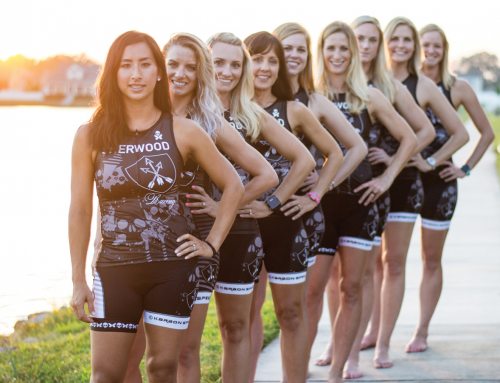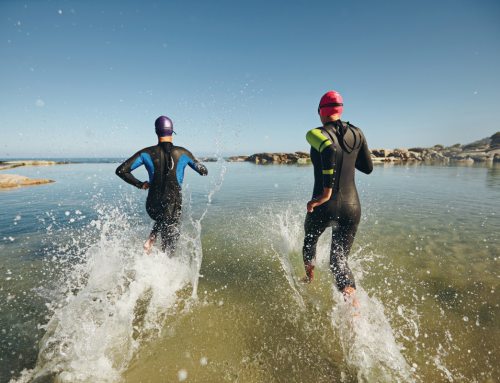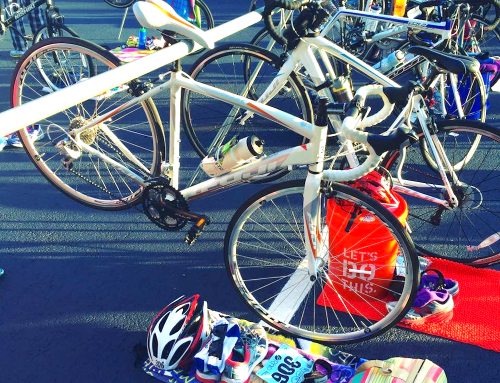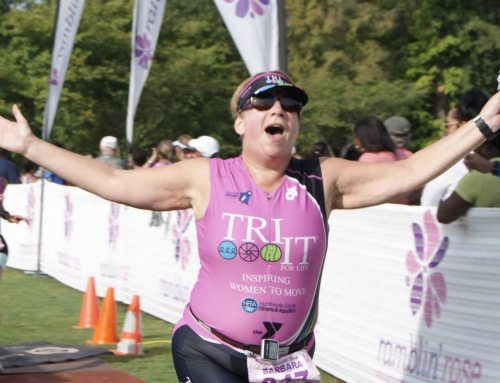Answering the Age Old Newbie Question:
Triathlon Specific or Road Bike?
By Victor Jiminez
Should you get a triathlon specific bike or a standard road racing bike?
In the early days of triathlons athletes didn’t have these problems. There were no aerodynamic bikes, no aero bars, and no special wheels. For a decade and a half standard road racing bikes were the only thing available and were the norm for triathletes. It wasn’t until the late eighties that aero bars were introduced and bikes were starting to be designed around aero bars. Today we have a mind-boggling selection of road and triathlon bikes to choose from and ads telling use that this or that bike is the fastest. So what type of bike is best for you?
If you are a beginner a road bike is the best place to start.
These are traditional road racing bikes with drop handle bars. These bikes are easy to ride, great all rounders and your hands are always close to the breaks and gears. These bikes were designed with a geometry that shifts your weight more towards the back of the bike. If set up properly, you will have very little weight or pressure on your hands. Also because of the shape of the handlebars you have multiple positions that enhance comfort and control.
So why is this type of bike great for a beginner?
Multiple positions, control, and light pressure on the hands is what makes these bikes well suited for beginners. In fact nearly all advanced or elite triathletes have a road bike and a triathlon specific bike. You can even install some clip-on aero-bars to help you get into an aerodynamic position. Set up for clip-on aero bars on a road bike is critical and you should seek out the help of a professional to avoid comfort problems or even injury.
Triathlon bikes are designed for aero bars.
Triathlon bikes were designed to be ridden in an aerodynamic position with one purpose in mind. Speed. These bikes have aero bars and frame geometry that makes them very comfortable to ride in a low and aerodynamic position. It is not an easy position to attain and is certainly not suited for everyone. To effectively ride a triathlon bike you have to be a reasonably good bike handler and athlete. Staying in the aero position and riding the bike in a straight line can sometimes be a challenge.
Challenging handling because of weight distribution.
Triathlon bikes by nature are a little more difficult to handle because a greater portion of your body weight is placed on the front end of the bike. This makes the aero position (elbows on aero bar pads) very comfortable. If set up properly, your upper body weight is skeletally supported by your upper arms. This eliminates tension from your arms, torso and upper body. This allows you to stay in this aerodynamic position for long periods of time.
Long periods of time in the aero position can cause problems.
An aero triathlon position may eliminate tension in your arms and torso but it can wreak havoc on your neck. Because your position is lower your head will have to be at a greater angle and the muscles in your neck need to be conditioned to holding up your head. Most riders will build up this strength within a couple of months of riding a triathlon specific bike in the aero position.
The position defines the bike.
Aero sculpted frames and air foil shaped wheels are common on triathlon bikes but the aerodynamics of the machine, while important, do not define a triathlon bike. It is the riders position that makes the difference. The riders body creates most of the aerodynamic drag and small tweaks to a riders position can save big time in a race.
Aerodynamic drag is not the only benefit.
It turns out that transitioning to the run is much easier from a triathlon specific bike position. The geometry of the bike allows you to use different muscles to pedal the bike than you would use on a road bike. This makes the bike to run transition less painful and you will have an easier time getting up to running speed.
Easier transitions, better aerodynamics, and more comfort.
What’s not to like about a triathlon bike? Some riders just don’t feel comfortable or confident in the low crouched triathlon position. Not to worry, your bike is very personal and confidence and comfort is much more important than aerodynamics. There are plenty of triathletes that ride road bikes without aero bars and are still very competitive. I know of several athletes that compete at a national level and nearly always place in the top of their age groups, riding regular road bikes without aero bars.
Summary
When thinking about what bike to use for triathlon think back to the sports roots and how athletes just used what they had, became good riders and then adapted to new positions as the equipment and sport evolved. If you are just starting out go with a standard road bike. They allow for multiple positions, easy to ride and widely adaptable. If you have a bit of experience then you might consider trying a triathlon specific bike that will be more comfortable in the aero position but takes some additional skill. With either of these choices you fit and position are most important so make sure you see a professional bicycle fitter and have your position dialed in.
# # #
Victor Jimenez is the owner and professional bicycle fitter at bicyclelab.com. Bicycle Lab is a small boutique studio that specializes in bicycle fitting, custom bicycles, and education. Victor teaches clinics and classes to individuals, coaches, and teams on bicycle fit, and the technical aspects of cycling. Bicyclelab.com, Facebook.com/bicyclelab, victor@bicyclelab.com







